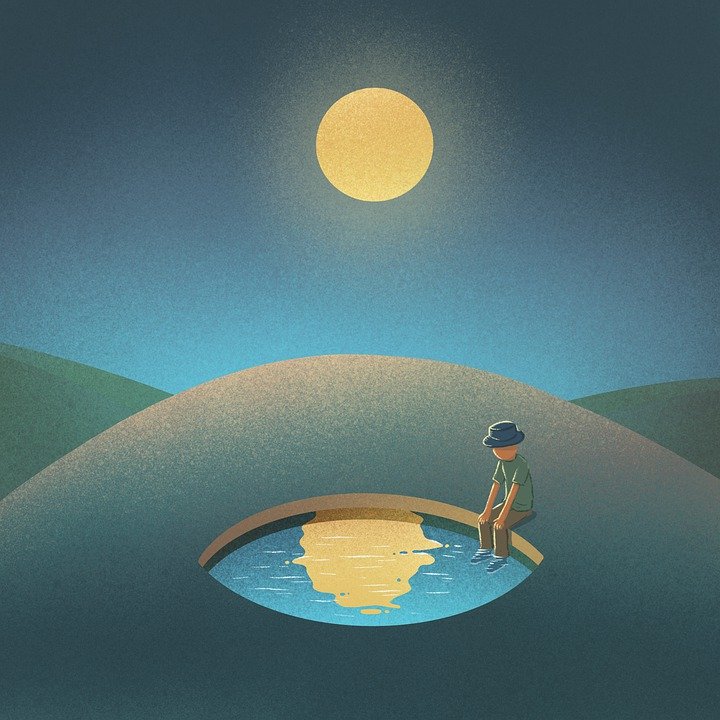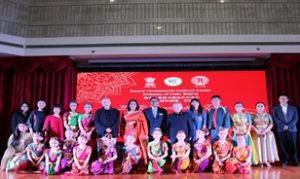
Who is it that is practicing spirituality and reaching for enlightenment? Is it you, or just a result of your clever social-survival mirror neurons mimicking spiritual practice? I can tell you that for most of us—with all the best and most earnest intentions in the world—it is most likely mirror neurons. Ergo, what all the masters, gurus, and new-age teachers tell us: the ego is still running the show. As if it is all theater, and we dress up for the role.
Arguably, this isn’t a big problem. Shakespeare did say that “all the world’s a stage, and all the men and women merely players.” But the brain needs to learn how to function from the moment we begin using it, so it copies from its environment—any young baby can prove this fact. We have these mirror neurons because our brain knows that we stand a better chance of survival if we are accepted by our social group, rather than rejected and left to rot. The more an act or practice is copied and learned, the more hardwired it becomes within our brain’s biology. The follow-up question, then, is: who are we beyond merely a simple composite of hardwiring learned from our environment? While this is the case for many phenomena, it can’t explain some characteristics that appear to be inherited from our parents and that may have previously been absent from the offspring’s life. Tiny, very personal character traits show through when a baby can express reactions beyond those to which they have been exposed. Then, beyond this, there are young children, often between 2.5–5 years old, who are able to talk about past lives in great and sometimes verifiable detail. Clearly, there is something more than mere biology going on. Retreats and intensive meditation workshops are both beneficial and popular practices for helping to peel away layers of accrued hardwiring and ego-driven delusions. However, being away from our young children while we choose to undertake long retreats can damage a child emotionally. This is an example of when a spiritual practice becomes selfish and led by ego desire; considering one’s own welfare before that of another. Learn an engaged practice instead, and make parenting an integral part of meditation.
Emotional damage is a significant contributor to how we function in the world—within ourselves and at a spiritual level. It is imperative, therefore, that we heal these traumas before moving forward, lest any attainments that we may accrue be built on shifting sands. Scientists tell us that we live in a universe of which more than 95 per cent is unknown and invisible, and that our five-per-cent reality isn’t solid and isn’t even really here at all. It is a subject that fascinates me, that I research deeply, and about which I have written extensively. It feels profoundly important to understand and is of particular significance in meditation. And here is where my thoughts on reality become quite a challenge to comprehend as they are contrary to all that seems, well, real. Based on a growing mountain of scientific evidence, I now imagine this five-per-cent reality to be the inverse of what we perceive it to be. The implications of this would radically change the way we understand our relationship with the whole. However, we cannot bypass the emotional body in preference to escaping into a metaverse; that would be an ignorant foray into the spiritual realm.
To address this issue at the foundational level, many of us may be victims of subtle traumatic damage without even realizing it. And, in general terms, such damage is often not consciously inflicted. Abandonment trauma, for example, can be inflicted so easily in a young child’s life, even by parents who are doing their best. But if a parent has to leave a child in order to work, the damage is often already done. So many people no longer have the support of an extended family network to help children to grow up feeling secure; instead, we have child-minders and schools and the imposed assumption that a young child likely won’t remember any passing traumas. After all, can you remember when you were three years old? Maybe some out there can, and while most of us can’t, our brains, if not our memories and sympathetic nervous systems, will retain impressions from that formative time. It’s a tragically challenging situation that our modern culture has created. Some children will be fine, of course, but others may grow up with a chronic, whispered, nagging unease, perhaps not quite fitting into the world around them and expecting good things to inevitably fall away. They work at people-pleasing to the detriment of personal boundaries, overcompensating in life, overly reliant on materialism or the polar opposite, and striving too hard for success and recognition. They experience a lack of healthy engagement, a lack of self-belief, malaise mixed with feelings of unworthiness and inadequacy, and a lack of love for oneself. While this isn’t an exhaustive list, it underscores the point: learning who you really are can require a lot of digging. And escaping to a “better place” than this earthly existence is one extreme response to a latent fear of abandonment, as is the abuse of spirituality, which probably means that your inner child is still hiding somewhere within, wounded and afraid.
Unfortunately, we can’t change our past. Too many people have been emotionally wounded by perpetrators who may well have been more than aware of their actions. However, we can hold a conscious light to the mirror neurons of our own mind. They will emulate regardless, so it is within our control, in the present moment, to mirror what we would like to manifest in our reality. As the illustration below indicates, the sympathetic nervous system runs down the spine, deep within the body. However, the influence of the parasympathetic system resides mainly in the brain. We have biology to explain the physiological importance of calming the mind.

One of the most beautiful and profoundly healing practices in quiet meditation is loving oneself as a young child: to talk to them, hold them, and hug them. Interacting with our one-year-old self with mutual laughter, love, sweet playfulness, and innocence. Listening to all that our two-year-old self has to tell us—and they tend to have a lot to say at that age—and being there for our inner five-year-old, telling them that it’s all OK and that you love them.
Repeat this as your inner child grows. Tell your struggling teenage self that you are proud of them and love them, and that they’re still going strong; that they are beautiful inside and out. That they are valuable. Sink into the feeling of this meditation until you can feel it in your body. A practice like this can help us to reveal as well as heal. Is there a moment when your young self clearly shows signs of a lack of self-worth or confusion? Can repeating the practices help to bring to our consciousness the hidden wounds that have hindered aspects of adulthood?
Practice as often as you feel you need to until you can feel the swell in your heart center, as if it wants to burst with love and joy, and until you feel an uncontrollable urge to laugh with your inner child. Because with a viscerally felt practice like this we are restructuring the inner landscape of our mind, of our neurobiology. We become our own mental social group in that our mirror neurons will reflect our older self loving our younger self, rewiring the brain. I adore this practice.
What you think, you become . . .
See more
Tilly Campbell-Allen (Dakini as Art)
Related features from BDG
A Contemplation on Symbolism
Mindful Expression: Immersion in the Essence of the Moment
I Spy with My Magic Eye . . .













Emotional and/or psychological trauma from unhindered toxic abuse typically results in a helpless child’s brain improperly developing. If allowed to continue for a prolonged period, it can act as a starting point into a life in which the brain uncontrollably releases potentially damaging levels of inflammation-promoting stress hormones and chemicals, even in non-stressful daily routines. I consider it a form of non-physical-impact brain damage.
The lasting emotional and/or psychological pain from such trauma is very formidable yet invisibly confined to inside one’s head. It is solitarily suffered, unlike an openly visible physical disability or condition, which tends to elicit sympathy/empathy from others. It can make every day a mental ordeal, unless the turmoil is treated with some form of medicating, either prescribed or illicit.
Since it cannot fight or flight, a baby stuck in a crib on its back hearing, for example, parental discord in the next room can only “move into a third neurological state, known as a ‘freeze’ state … This freeze state is a trauma state” (Childhood Disrupted, pg.123).
I understand that my own brain uncontrollably releases potentially damaging levels of inflammatory stress hormones and chemicals, even in non-stressful daily routines. It’s like a discomforting anticipation of ‘the other shoe dropping’ and simultaneously being scared of how badly I will deal with the upsetting event, which usually never transpires.